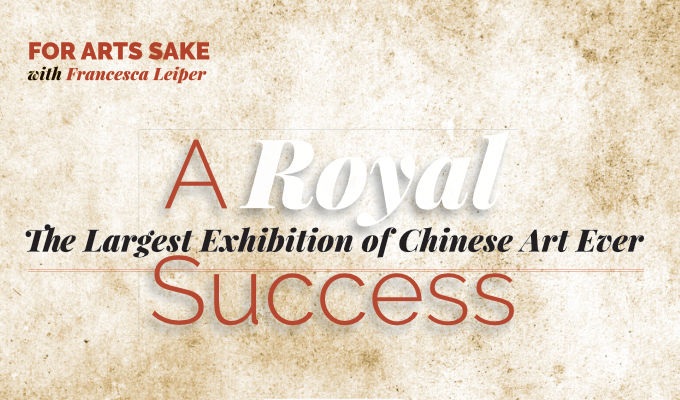The largest exhibition of Chinese art of all time was not, as one might expect, held in China. Nor was it a recent affair.
Beginning on 28 November, 1935, the Royal Academy in London held a monumental exhibition displaying over 3,000 objects of Chinese art lent from 240 governments, institutions and individuals around the world. Britons were compelled to expand their understanding of Chinese art, which until then was characterised by decorative “things of use”, such as flowery wallpapers, silken fabrics and bone china tea sets. At the Royal Academy visitors saw everything from the finest of imperial ceramics to artefacts only recently dug up, ancient bronzes and jades, painting, architecture and the even beguiling art of calligraphy.
It was a feat of organisation and a tremendous success. So popular was the exhibition that over 400,000 people visited throughout its 3-month run. With discounted admissions and rail fares for students across the country, and one in four visitors purchasing a catalogue, word soon got around.
Admission hours ran from 9:30am to 7pm, but still that was not enough. Requests for extended viewing hours came in droves and the Academy’s doors were closed intermittently to avoid overcrowding. On 27 March, 1936, the Shanghai Times reported on the frenzy that marked the exhibition’s final hours; “As late as 10 minutes before closing the enthusiasts rode up in taxis to catch a glimpse of a few rare exhibits”. Looking back in 2006, Jason Steuber described it as, “the largest cultural event ever mounted”.
One thing the exhibition proved is the power of art to inspire. The Royal Academy show marked a pivotal point in the study of Chinese art in Britain, galvanising a new generation of enthusiasts, eager to grapple the artistic heritage of this far-flung country.
For governments, art institutions and markets around the world, the exhibition was of no small significance. In China, the government seized the opportunity to perform on a world stage, establishing a special committee who selected and arranged the lending of some 984 pieces. “Our sole aim in doing so”, they pronounced, “is to make the West appreciate the beauty of Chinese art”.
At a time when most Chinese were more occupied with the Japanese invasion of Manchuria, many saw the exhibition as a frivolous waste of national resources. But politically, it was crucial. It gave China an occasion to redefine its cultural authority and abolish biased representations overseas, transforming the Western perception of “Chinese craft” into “Chinese art”.
As the exhibition drew to a close in London, the Shanghai Times reported, “Thousands lingered sadly to bid farewell to all the beauty which had delighted London for 3 months”. In June of the same year, the objects lent by China were put on display in Nanjing, accompanied by photographs and explanations of the remaining exhibits on display in London, an exhibition of an exhibition.
Culminating the show, C. T. Loo, a Chinese collector based in London and New York, donated the centrepiece of the exhibition, a six-metre marble Amitabha Buddha statue, to the Chinese government, who in turn presented it to the British Museum where it remains on display. This literal swapping of cultural artefacts acts as a metaphor for the far greater cultural, social, political and economic exchange that was generated by one single Chinese art exhibition over 80 years ago.









